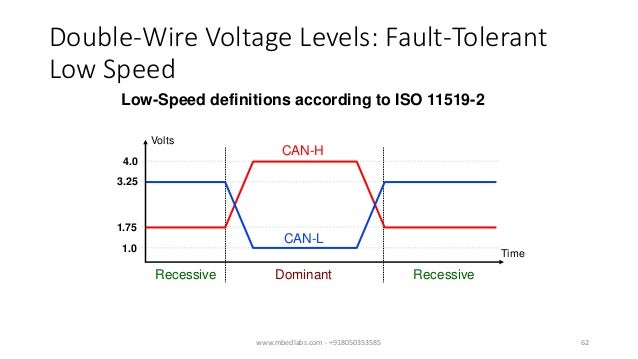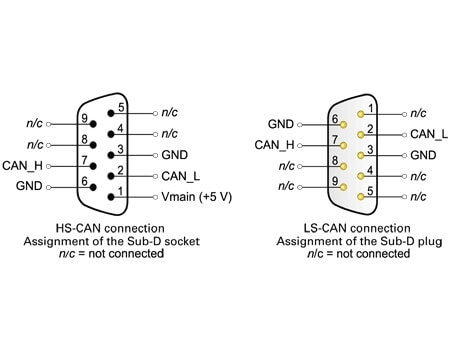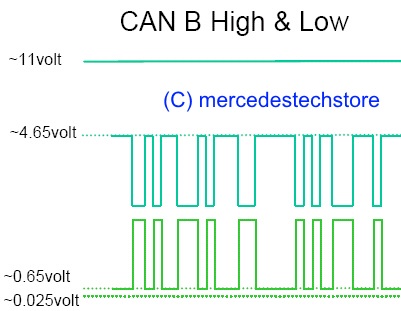
Since communication relies on a voltage differential between the two bus lines, the CAN bus is NOT sensitive to inductive spikes, electrical fields or other noise. When data bits are being transmitted, the CAN high line goes to 3.75V and the CAN low drops to 1.25V, thereby generating a 2.5V differential between the lines: each of the CAN lines is referenced to the other one, not to vehicle ground. When the CAN bus is in idle mode, both lines carry 2.5V. Individual nodes can be removed from the network without affecting the other nodes. A node only responds when it detects its own identifier. All ECUs on the bus are effectively in parallel and that’s why all the nodes see all of the data, all of the time. Each network node has a unique identifier. The CAN controller is connected to all the components on the network via these two wires. The wires are called CAN high and CAN low. It allows automotive components to communicate on a single or dual-wire networked data bus up to 1Mbps.ĬAN bus is one of five protocols used in the OBD-II vehicle diagnostics standard.ĬAN bus uses two dedicated wires for communication.


It connects the individual systems and sensors as an alternative to conventional multi-wire looms.

It become an international standard (ISO 11898) in 1994, and was specially developed for fast serial data exchange between electronic controllers in motor vehicles. CAN bus is a message-based protocol, designed specifically for automotive applications but now also used in other areas such as aerospace, industrial automation and medical equipment. The CAN bus is an automotive bus developed by Bosch, allowing microcontrollers and devices to communicate with each other within a vehicle without a host computer.


 0 kommentar(er)
0 kommentar(er)
